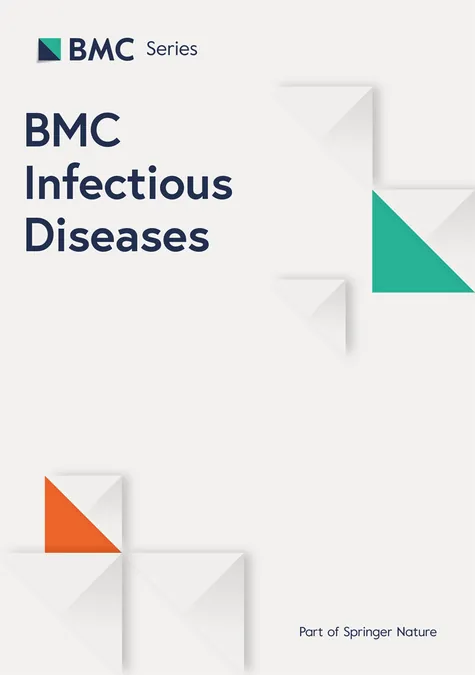
Unlocking the Secret to Youthful Muscles: How Stem Cells Can Combat Aging Frailty
2025-06-12
Author: Siti
Aging Population Faces Major Health Crisis
As developed nations grapple with an aging population, the resulting frailty and degradation in health are emerging as critical concerns. One of the most alarming issues? Gradual muscle loss, a condition often exacerbated by inadequate healing abilities, especially following falls or surgical procedures.
The Silent Epidemic of Sarcopenia
Sarcopenia, the term for reduced muscle mass among the elderly, leads to greater vulnerability and mobility issues. Individuals suffering from this condition frequently find themselves hospitalized, facing a cascade of additional health challenges due to falls and fractures that trigger rapid declines in their health.
Rejuvenating Muscle Stem Cells: The Key to Recovery?
Dr. Yu Xin (Will) Wang, a prominent researcher at the Sanford Burnham Prebys Medical Discovery Institute, is on a mission to uncover the mysteries of muscle stem cells and their decline with age. "Our research focuses on understanding how aged muscle stem cells differ from their younger counterparts and finding ways to reverse these age-related changes," Wang explained.
A Breakthrough Discovery: Prostaglandin E2
In groundbreaking research published in Cell Stem Cell, Wang and his team from Stanford University revealed a promising treatment involving Prostaglandin E2 (PGE2), a naturally occurring lipid. This treatment successfully enhanced the regeneration and strength of aging muscles in mice.
The Science of Stem Cell Dysfunction
Previous studies established that PGE2 plays a crucial role in activating muscle stem cells after injury in younger mice. However, the latest findings indicate that elderly muscle stem cells exhibit a significant reduction in EP4 receptors, which are essential for responding to PGE2. "As we age, our PGE2 levels decrease, dulling the cellular response to repair needs," Wang remarked, likening this diminished signaling to a soft alarm clock that aging stem cells have also muted.
Turning Back the Clock: A Simple Dose, Lasting Effects
Remarkably, the research team found that administering a stable form of PGE2 to aged mice post-injury, along with an exercise regimen, resulted in significant muscle mass gains and enhanced strength compared to a control group. "What astonished me was that just one treatment was enough to restore muscle stem cell function, and the benefits persisted long after the drug was administered," Wang noted, highlighting the therapeutic potential.
Restoring Balance to Aging Genes
The study also uncovered how PGE2 helps reverse age-related changes by modulating key transcription factors, leading to a rebalancing of gene expression. Genes that become overactive during aging were suppressed by the treatment, demonstrating PGE2’s capacity to rejuvenate stem cell function.
The Future of Muscle Regeneration and Beyond
But the ambitions of Wang and his team go beyond just muscle recovery. Preliminary evidence suggests that PGE2 might also aid other tissues, hinting at its broader applications in regenerative medicine. Wang stated, "Our past findings indicate PGE2 supports muscle fibers and even the neurons that interact with them. Its regenerative properties might extend to other organs like the intestine and liver, potentially enhancing tissue renewal across the board."
A Brighter Future Through Science
Ultimately, Wang’s team aims to elevate the quality of life for aging individuals by reversing the detrimental effects of aging. With promising research like this, the dream of maintaining health and vitality in later years may soon become a reality.

 Brasil (PT)
Brasil (PT)
 Canada (EN)
Canada (EN)
 Chile (ES)
Chile (ES)
 Česko (CS)
Česko (CS)
 대한민국 (KO)
대한민국 (KO)
 España (ES)
España (ES)
 France (FR)
France (FR)
 Hong Kong (EN)
Hong Kong (EN)
 Italia (IT)
Italia (IT)
 日本 (JA)
日本 (JA)
 Magyarország (HU)
Magyarország (HU)
 Norge (NO)
Norge (NO)
 Polska (PL)
Polska (PL)
 Schweiz (DE)
Schweiz (DE)
 Singapore (EN)
Singapore (EN)
 Sverige (SV)
Sverige (SV)
 Suomi (FI)
Suomi (FI)
 Türkiye (TR)
Türkiye (TR)
 الإمارات العربية المتحدة (AR)
الإمارات العربية المتحدة (AR)